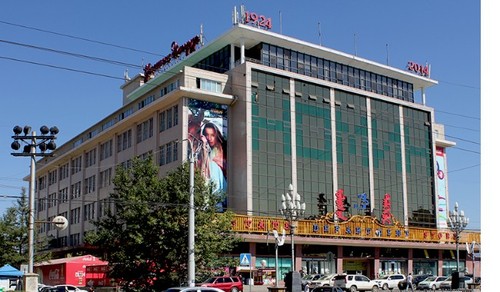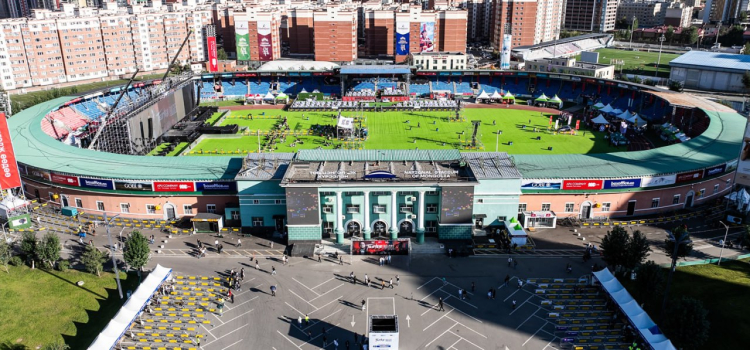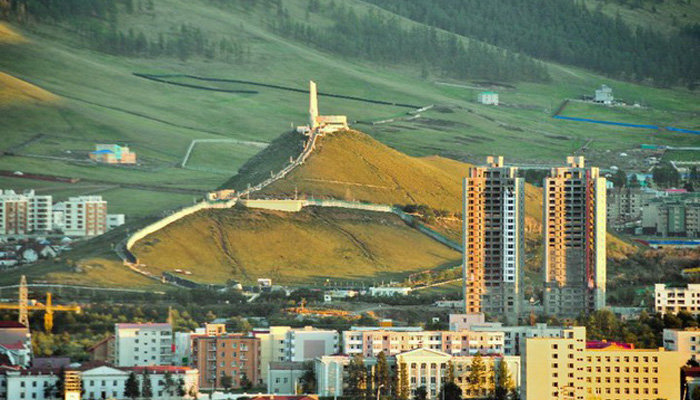Ulaanbaatar City (abbreviated as UB) is the capital of Mongolia and serves as the political, cultural, and economic center of the country. Nestled in the valley of the Tuul River and surrounded by scenic mountains, including the sacred Bogd Khan Mountain to the south, this city is home to more than 1.6 million people—over half of Mongolia’s total population—making it the largest city in the country.
Originally established in 1639 as a mobile Buddhist monastic center, Ulaanbaatar has since evolved into a vibrant city where modern architecture, traditional ger (yurt) districts, cultural heritage, and urban development coexist.
The city’s unique character is shaped by its mix of glass skyscrapers, Soviet-era buildings, ancient monasteries, and expansive ger areas. Key cultural landmarks include the Gandan tegchinlen Monastery, the National Museum of Mongolia, and the Choijin Lama Temple Museum. Just outside the city lie natural attractions such as Bogd Khan Mountain and the Gorkhi-Terelj National Park, offering residents and visitors alike a close connection to Mongolia’s stunning natural landscapes.

State Department Store
The State Department Store was originally established in 1921 with the assistance of specialists from the Soviet Union, and was initially named the “Central Store.” At its inception, it operated with around ten employees, including a director, instructor, chief accountant, account trainer, bookkeeper, assistant accountant, and a merchandise processing specialist.
In 1933, the store relocated to the building that now houses the Zanabazar Museum of Fine Arts. Interestingly, this building was originally constructed in 1905 by a Russian merchant named Gudvintzal for commercial purposes. At the time, the area was the heart of Khüree (the former name of Ulaanbaatar), bustling with people and trade. Gudvintzal, recognizing the commercial potential of the location, built a two-story European-style building with numerous windows. Locals were amazed by the modern structure—many would gaze at their reflections in the glass and greet themselves, while traders would even bring fully loaded camels directly through its large entrance doors. It was truly a hub of commerce, and this vibrant environment played a significant role in the further development of the “Central Store.”
In 1961, the store moved to its current location and was renamed the State Department Store. In 1999, the government decided to privatize the store, and a majority of its shares were purchased by Nomin Holdings, which has since acquired full ownership. Following privatization, the store underwent management reforms and has expanded and modernized significantly. Today, the State Department Store employs over 600 staff members who ensure the smooth operation of one of Mongolia’s most iconic retail centers.

National Central Stadium (Töv Tsengeldekh Khüreelen)
The National Central Stadium was originally established in 1934 through the initiative of young members of the Mongolian Revolutionary Youth League in Ulaanbaatar. In 1958, the original smaller stadium was relocated to its current location. Today, the Central Stadium has a seating capacity of 20,000 people. In 1961, to commemorate the 40th anniversary of the People’s Revolution, the Soyombo Pillar was erected behind the stadium.
In 2014, the old wooden benches were replaced with individual plastic seats with backrests, providing greater comfort for spectators. Every year during the Naadam Festival, the stadium and its surrounding area come alive with activity and crowds of celebrants.
During the early years of the Central Stadium, from 1956 to 1960, Darin Damdin—a celebrated wrestler from Tsagaan-Üür soum in Khövsgöl Province, a Hero of Labor of Mongolia, and a People’s Artist—captivated audiences by winning five consecutive Naadam wrestling tournaments. He became widely known for the phrase “Garlalaa, örlöö, davlaa” (“He entered, locked, and conquered”). In 1959, after winning the National Naadam and earning the title of Dayan Avarga (Great Champion), he went on to make history that same evening by competing in the first National Youth and Student Games. Wrestling in a round-robin format against 36 other competitors, he emerged undefeated with 36 consecutive wins, earning the prestigious title of Darkhan Avarga (Invincible Champion)—a legendary feat in the history of Mongolian wrestling.

Zaisan Hill
In earlier times, travelers from the countryside who came to pay respects to the Bogd Gegen (Spiritual Leader of Mongolia) were permitted by the royal palace to rest their livestock and recover from the long journey at the foothills behind a small hill on the slopes of Bogd Khan Mountain. These pilgrims, mostly disciples of the Jebtsundamba Khutuktu, would prepare to meet their spiritual leader and wait their turn in this peaceful valley. Many of them were “Zaisans” — noble or ranking members of their communities — who would set up camp around this hill, and they performed rituals to honor it. Because of this tradition, the place became known as Zaisan Hill.
The northern side of the Bogd Khan mountain valley, directly south of Ikh Khüree (the old name of Ulaanbaatar), came to be known as Ar Zaisan (Back Zaisan), and the southern side as Övör Zaisan (Front Zaisan). There was once a temple in the Zaisan valley known as Narkhajid’s Dugang, where 20 to 30 male and female monks held regular services. On the 25th day of the final lunar month each year, the Bogd Khan and his queen, Dondogdulam, would visit the temple and make generous offerings. During these festive occasions, young women aged 18–20 from Amgalan Village, dressed in fine silken robes of five colors, would be invited to perform traditional music on the shanz and yochin (Mongolian instruments). It is said that the renowned People’s Artist Dashdeleg also participated in these events as a musician in his youth.
Legends of Zaisan Hill
One legend tells of a quarrel between Bogd Khan Mountain and Chingeltei Mountain. Chingeltei Mountain claimed to be taller and grander than Bogd Khan. Offended by this arrogance, Bogd Khan angrily declared, “You shall forever remain before me, humbled,” and sliced off Chingeltei’s peak, placing it in front of himself — thus forming Zaisan Hill.
Another tale speaks of a time when Ulaanbaatar was constantly plagued by disasters — droughts, harsh winds, and great misfortunes. The city leaders gathered and concluded that the root cause lay in a cursed hole located in the southern valley near the Tuul River. Evil spirits were believed to dwell there, and the hole needed to be sealed. They decided that the peak of Chingeltei Mountain, which stood slightly taller than the others, would serve best for this purpose. They cut off the summit and used it to cover the cursed hole. Ever since, the misfortunes ceased, and peace returned to the city. If you look closely today, you’ll notice that the top of Chingeltei Mountain appears flat — a subtle echo of this ancient legend.